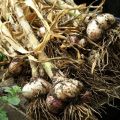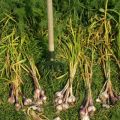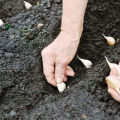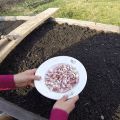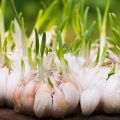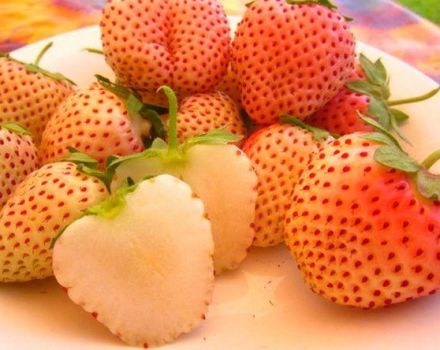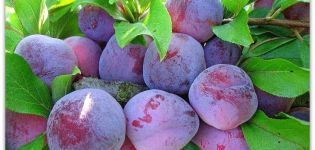How spring garlic differs from winter garlic and which one is better to store
Garlic is considered the most common and versatile vegetable crop. It is used not only in the culinary field, but also in medicine when creating medicinal decoctions and mixtures. There are two main types of garlic - spring and winter. Before you start planting such a vegetable, you need to figure out what exactly is the difference between winter garlic and spring garlic.
Features of spring garlic
Popular among vegetable growers spring varieties of garlic bushessuitable for outdoor and greenhouse cultivation. Rounded garlic bulbs have a complex structure that distinguishes them from winter varieties. Several small teeth are formed in the scaly sinuses, which eventually become large lobules. They are distinguished by a triangular shape with a slight thickening closer to the middle. Garlic teeth are combined into one solid head, which is covered with purple, yellow or white scales on top.
The leaves of the spring varieties have an oblong shape with a pointed tip. The width of each leaf is 1-2 cm, and the length reaches 30-35 cm. Subsequent leaves grow from the axils of the previous one, due to which a false stem is formed over time.
Also, a flower arrow forms on the bushes, which grows up to one and a half meters. After flowering, its tip is twisted into a spiral and covered with a thin film.
It is in the flower arrow that seeds are formed over time, which in the future can be used to plant garlic.Spring varieties are planted in the first half of spring, when the soil warms up to 5-10 degrees. Previously, planting a vegetable is not recommended, as it will not take root in cold soil.
Features of winter garlic
To obtain a large amount of harvest, gardeners are advised to plant winter varieties of garlic.
For these vegetables, the leaves are divided into two categories:
- Upper. They are located above the ground surface. The main task of the top sheets is the assimilation of useful trace elements.
- Scales. These are modified leaves that have a protective function. They cover the garlic teeth and protect them from external influences.
The upper leaves are quite long and grow up to 60-65 cm. At least eight leaves are formed on each bush. First, the lower leaves are formed on the bushes, from which a false stem then grows.
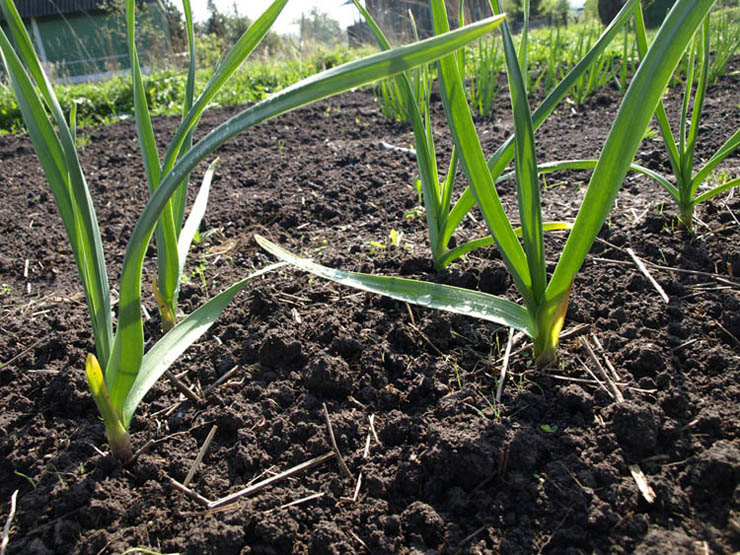
The main feature of most winter varieties is their large bulbs, the weight of which reaches 80-90 grams. Garlic heads have a flat-round shape.Their surface is covered with dense white scales, which protect the teeth in the bulb.
Planting winter garlic is not done in spring, but in autumn before the first frost.
Most gardeners plant it in mid-October. Residents of the northern regions of the country start planting a month earlier. However, it is impossible to plant garlic too early, as it will begin to germinate, its roots will freeze due to frost.
How do they differ from each other?
To independently distinguish winter garlic from spring garlic, you need to familiarize yourself with their main differences.
By landing time
The main difference between these species is the time of their planting. Spring garlic does not cope well with low temperatures, so it is not planted until spring. The ideal time for planting it is considered the beginning to mid-March, when the earth warms up normally.
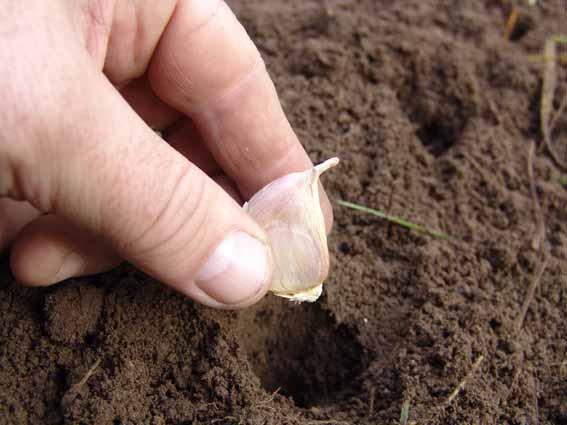
Winter garlic copes well with temperature changes, so it can be planted even in autumn.
In appearance
Easiest to distinguish types of garlic by their appearance. Spring varieties are distinguished by small bulbs, which have 25-30 teeth. Also, a characteristic feature of such plants is that they lack a stem. In winter garlic, the bulbs are much larger and consist of 5-10 teeth, which are evenly distributed around the stem.
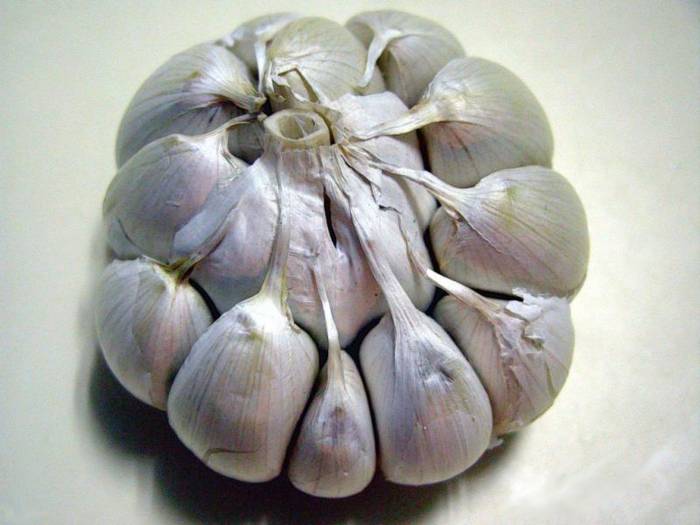
For care
The difference between different types of garlic can be seen in the way the bush is taken care of. The spring type of garlic bushes needs fertile soil, which contains many nutrients.
Therefore, to obtain a good harvest, you will often have to add organic or mineral fertilizers to the soil.
Winter plants do not need careful care, as they grow well even in sandy loam soil. Fertilize such garlic it is necessary much less often - 1-2 times during flowering.
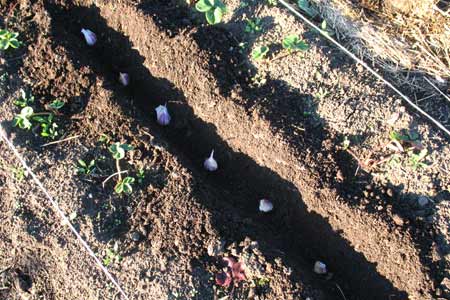
By ripening period
Spring varieties ripen by the second half of summer, so they are harvested in August. However, sometimes the timing may shift due to the peculiarities of the climate in which the vegetable is grown. The ripe fruits of winter garlic are harvested a little earlier - in the first half of July. It is very easy to tell if the bulbs are ripe. To do this, pay attention to the leaves, which should be yellowed and dry.
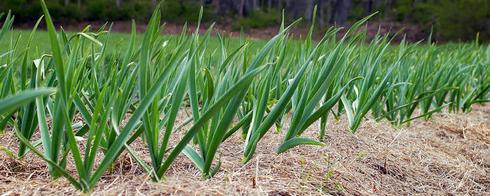
By keeping quality
The spring variety differs in the shelf life of the collected heads, since even at too low or high temperatures it is stored for about two years. Winter garlic bulbs are stored much worse, especially at temperatures above 10-15 degrees. In such conditions, it will be possible to store the crop no longer than six months.
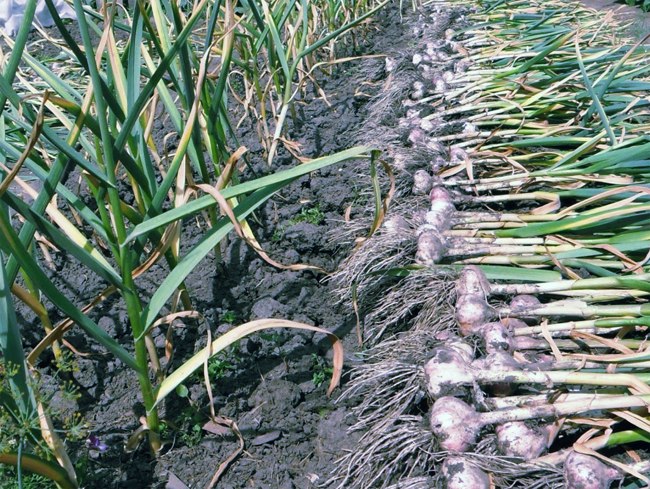
Which one is better to choose?
Before planting vegetables, many gardeners are faced with the problem of choosing garlic. People who have never cultivated it before do not know which variety to choose. There is no definite answer to this question, since each variety has its own positive and negative sides.
However, if you determine the purposes for which garlic bushes are grown, then making the right choice is much easier.
If you plan to plant a vegetable in order to store the harvested crop in the cellar in winter, it is better to give preference to spring garlic. This species is much better stored in almost any conditions.
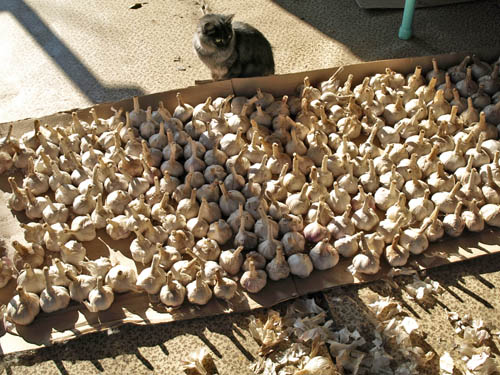
To create winter storage, gardeners are advised to choose a winter one, since its fruits are distinguished by a rich taste. Also, this variety is more productive, so it will be enough to create a large number of blanks for the winter.
Which garlic is best stored, winter or spring?
Many gardeners who grow garlic on their plots do not know which type of vegetable is best stored in winter. For winter storage, it is better to grow spring bushes, since their fruits are better keeping quality.Winter crops are not suitable for storage in winter, as, due to the low temperature, they quickly lose moisture and begin to deteriorate. This is due to the fact that such bulbs are poorly protected from the effects of temperature.
Conclusion
Some gardeners cannot choose garlic for planting, as they are not familiar with its main varieties. Therefore, it is recommended to familiarize yourself in advance with the characteristic differences between winter and spring garlic in order to choose a suitable variety for growing in the garden.


